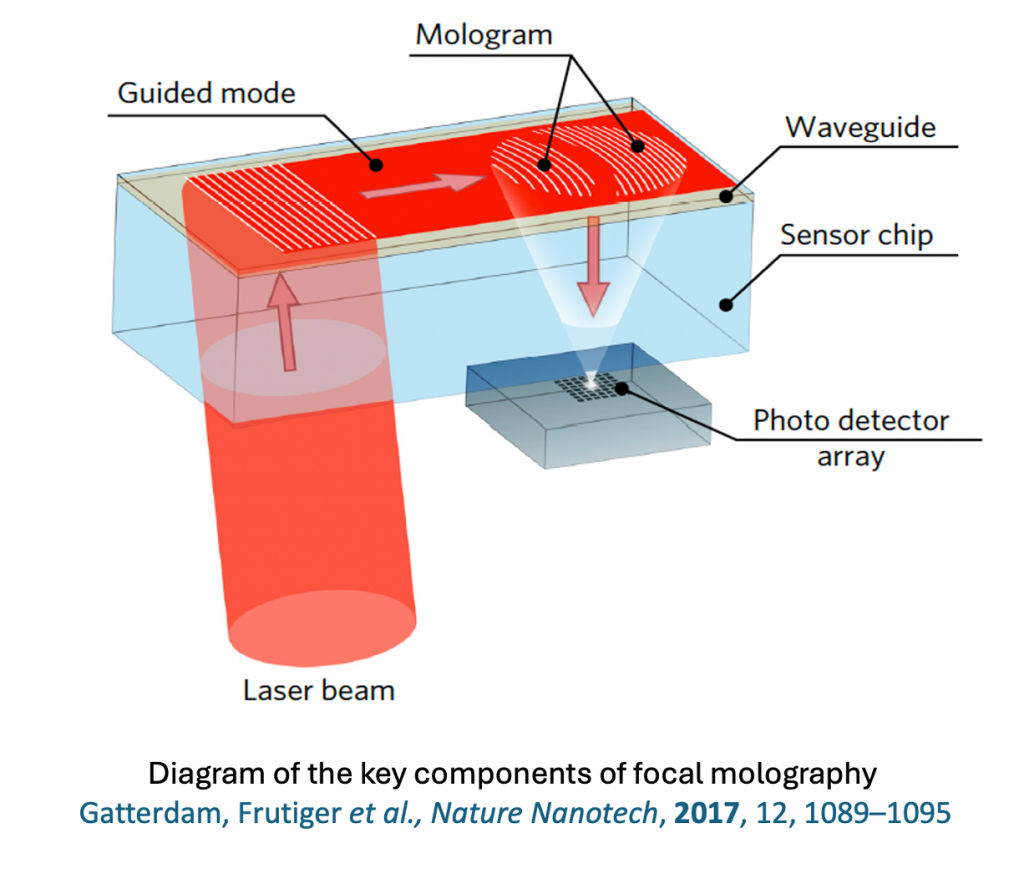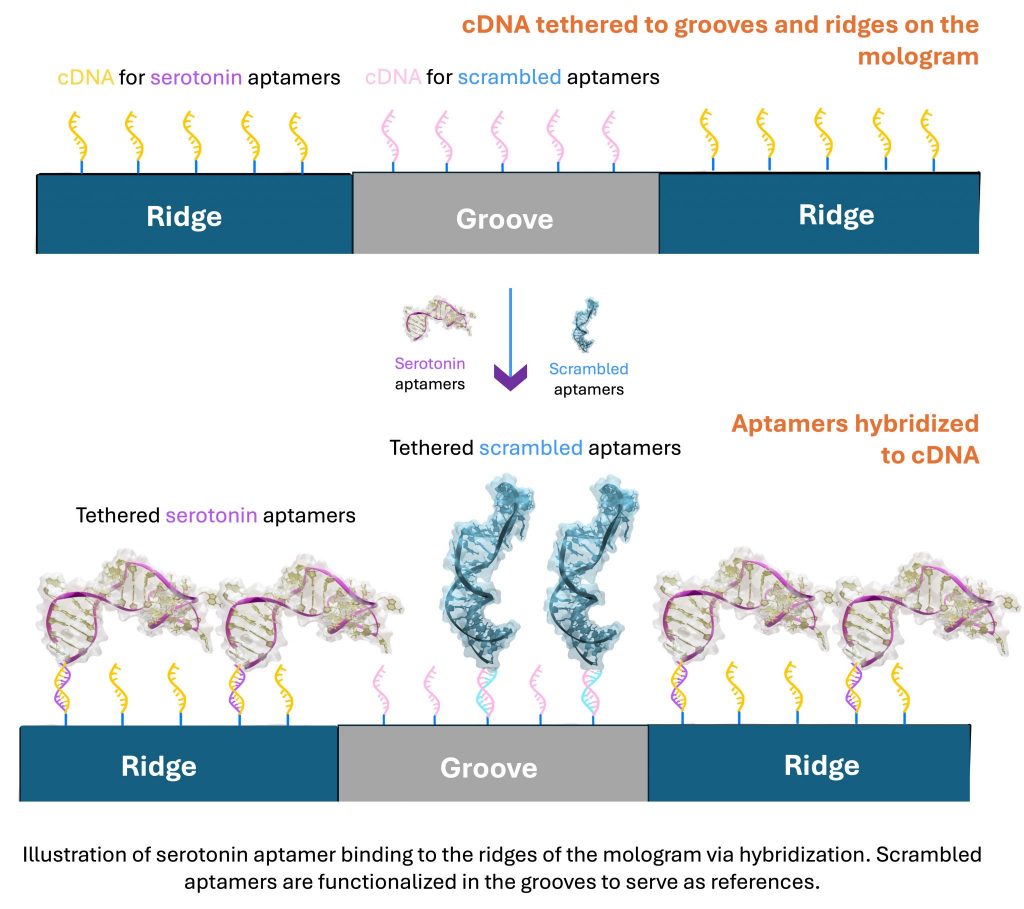Integrating DNA Aptamers with Focal Molography for Neurotransmitter Sensing in Complex Biofluids
Understanding neuronal chemical communication via neurotransmitters holds promise for advaning the modeling, diagnosis, and treatment of various neurodegenerative disorders. For instance, the neuropathology of several psychiatric disorders has been linked to alterations in the levels of neurotransmitters such as serotonin and dopamine. However, detecting and quantifying these small-molecule neurotransmitters within complex biological samples presents significant challenges such as the differentiation of structurally similar chemicals and the abundance of non-specific binding events.
To address these issues, we employ focal molography, an optical biosensing technology that enables real-time tracking of biomolecular interactions within undiluted, crude media. Central to this approach is the molecular hologram, or mologram, which is comprised of active lines containing sensing molecules. The mologram enables selective constructive interference of diffracted light waves scattered solely from target molecules bound to recognition elements tethered to these active lines. Scattered light from non-specifically bound molecules do not contribute to this output signal, thereby facilitating specific detection of target molecules even in complex biological samples.

However, this technology has not yet been utilized for the detection of neurotransmitters.
Hence, we are integrating DNA-based recognition elements called aptamers, as recognition elements into the molography system to detect neurotransmitters like dopamine and serotonin. We are currently working to leverage aptamer structure-switching properties induced by neurotransmitter binding to detect biologically relevant quantities of these neurotransmitters with high sensitivity and selectivity in neurobasal media.

We envision applying this technology to monitor biomolecular interactions at the interface of in-vitro neuronal cultures. These experiments promise to provide meaningful insights into neuronal communication and their responses to various drug candidates and stimuli.
Read more here:
Gatterdam, Frutiger et al., Nature Nanotech, 2017, 12, 1089–1095